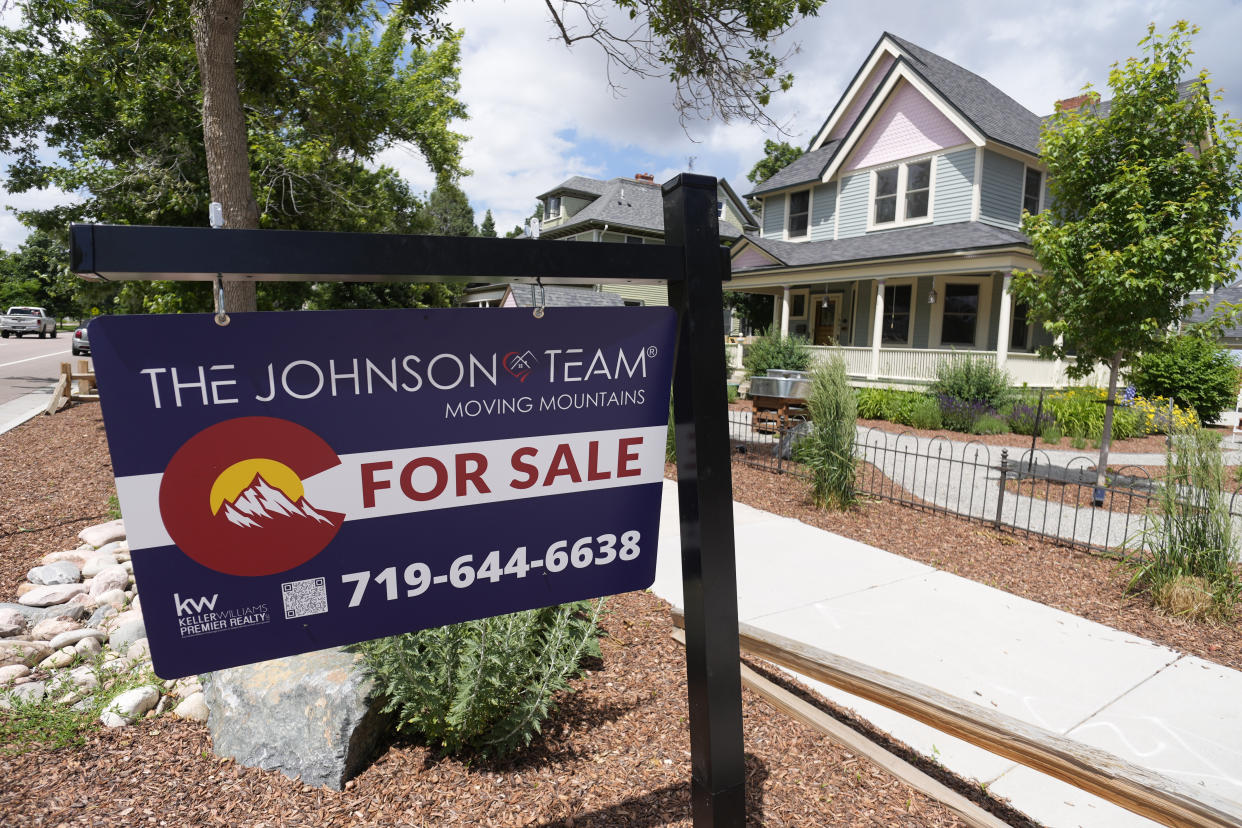Home prices rose again in June but higher mortgage rates complicate housing's outlook
Home prices climbed for the fifth straight month in June as demand continued to outweigh supply and amid higher mortgage rates.
The S&P Case-Shiller National Home Price Index increased by 0.7% in June compared with May on a seasonally adjusted basis. That was in line with the 0.7% increase the month before. The index remains just 0.02% off its all-time peak exactly a year ago.
The index measuring home prices in the 20 largest US cities also gained in June, rising 0.9% month over month and exceeding the Bloomberg consensus estimate of a 0.8% gain.
"With 2023 half over, the National Composite has risen 4.7%, which is slightly above the median full calendar year increase in more than 35 years of data," Craig J. Lazzara, managing director at S&P DJI, said in a statement. "We recognize that the market’s gains could be truncated by increases in mortgage rates or by general economic weakness, but the breadth and strength of this month’s report are consistent with an optimistic view of future results.”
Year over year, the national housing index was unchanged in June, up from a decline of 0.4% the month before. The 20-city index decreased by 1.2% on a non-seasonally adjusted basis.
Chicago, Cleveland, and New York again reported the highest year-over-year gains among the 20 cities in June at 4.2%, 4.1%, and 3.4%, respectively.
"Home price acceleration is most notable in markets that remained relatively affordable throughout the pandemic and saw less volatility from household migration, such as those in the Midwest and New England," Dr. Selma Hepp, CoreLogic chief economist, said. "Home prices in these markets are now catching up with more expensive ones."
The index uses the repeat sales method to measure home price growth. This method uses data on properties that have sold at least twice to more accurately calculate the change in each home's value and is based on a three-month moving average.
Mortgage rates rising
Borrowing costs started to climb in June, averaging 6.71%, after staying below 6.5% for the two preceding months. That weighed on home sales that month. Both sales of existing and new homes dropped in June as buyers got priced out.
But the lack of transactions in June — coupled with the index using a three-month moving average — wasn’t enough to nudge prices lower as rates climbed.
"That creates quite a double whammy on housing affordability for normal people," Patrick Carlisle, San Francisco Bay Area chief market analyst at Compass, said.
Read more: Rates reached 22-year high at 7.23% during the week of Aug. 24
For instance, buyers who purchased a house at June’s rate are paying $727 more on a median-priced house of $406,700 with a 20% down payment, compared with two years ago when mortgage rates were at 3.02%.
"The affordability issue has been absolutely blown out of whack by the increase in interest rates," Carlisle said.

Price forecast
Mortgage rates have only risen further since, hitting 7.23% last week, the highest point since June 2001 as the Federal Reserve remains resolute in meeting its 2% target for inflation.
Read more: What the latest Fed rate hike plan means for mortgage rates and loans
That complicates where home prices may go.
On the one hand, higher rates only exacerbate the lock-in effect keeping homeowners from selling their properties, putting further pressure on inventory, and propping up prices. On the other, many buyers may be priced out altogether with rates this high, meaning sellers might have to cut prices to lure in demand.
Already, the five-month stretch of rising prices from February to June surprised onlookers, prompting some analysts to revise their home price forecasts. For instance, the Goldman Sachs housing team now expects an increase of 1.8% in home prices this year, up from the 2.2% decline they predicted before.
But the new forecast means that "home prices will remain roughly unchanged through year-end and then return to trend growth levels in 2024," Vinay Viswanathan, a fixed income strategist at Goldman Sachs, wrote in the research note.
CoreLogic estimated home values will climb by 4.3% from June 2023 to June 2024.
"While home prices have remained strong in 2023, elevated mortgage rates complicate the situation for potential homebuyers, a trend that will likely constrain additional price gains for the rest of the year," CoreLogic's Hepp said.
"Home prices are still expected to reaccelerate and reach mid-single-digit growth rate by the end of the year."
Rebecca Chen is a reporter for Yahoo Finance and previously worked as an investment tax certified public accountant (CPA).
Read the latest financial and business news from Yahoo Finance
